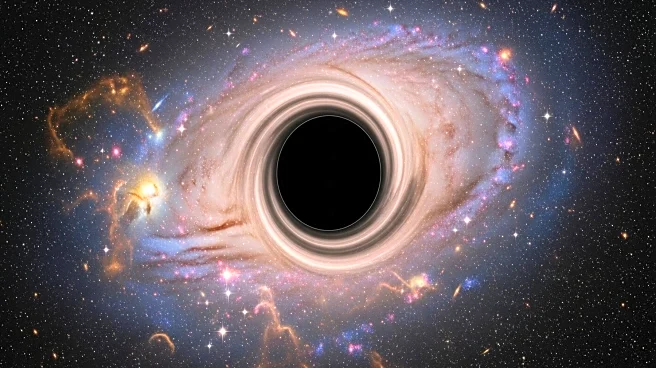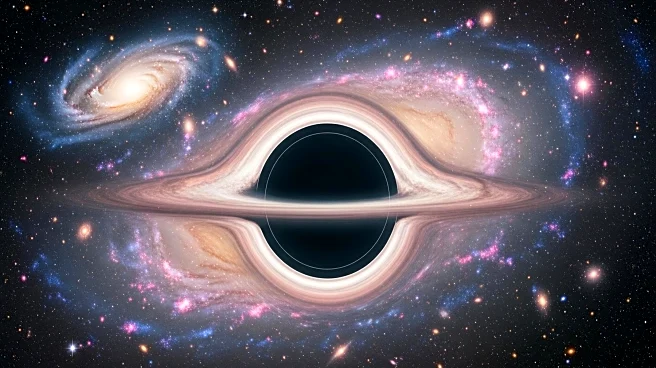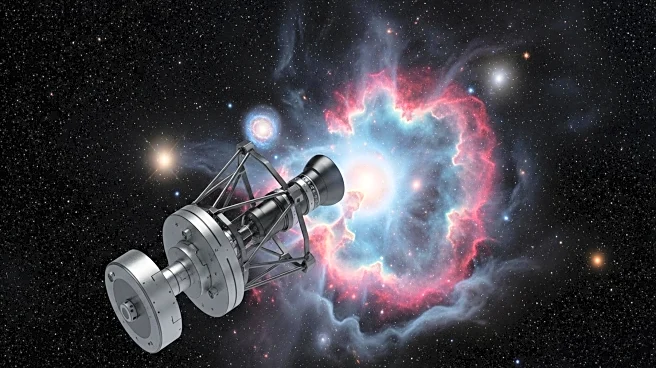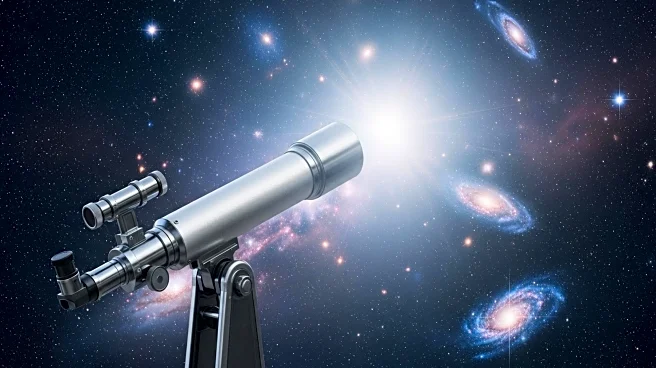What's Happening?
An international team of astronomers led by The University of Texas at Austin's Cosmic Frontier Center has identified the most distant black hole ever confirmed, located in the galaxy CAPERS-LRD-z9. This discovery places the black hole 13.3 billion years into the past, just 500 million years after the Big Bang. The team used data from the James Webb Space Telescope's CAPERS program to identify the black hole's distinct spectroscopic signature, which involves fast-moving gas creating red and blue wavelength shifts. The discovery provides a unique opportunity to study the early universe's structure and evolution.
Why It's Important?
The identification of this distant black hole offers valuable insights into the early universe, particularly the formation and evolution of galaxies and black holes. The discovery challenges existing models of black hole growth, suggesting that early black holes may have developed much faster or started out more massive than previously thought. This research could reshape our understanding of cosmic evolution and the role of supermassive black holes in galaxy formation, potentially influencing future astronomical studies and theories.
What's Next?
The research team plans to gather more high-resolution observations using the James Webb Space Telescope to further study CAPERS-LRD-z9 and the role of black holes in the development of Little Red Dots galaxies. These observations could provide deeper insights into early black hole evolution and the characteristics of these unique galaxies. The findings may also contribute to understanding the distinct red color and unexpected brightness of Little Red Dots.
Beyond the Headlines
The discovery of CAPERS-LRD-z9 highlights the capabilities of the James Webb Space Telescope in exploring the universe's outermost edges. It also underscores the importance of spectroscopy in identifying and studying distant celestial objects. The research may lead to breakthroughs in understanding the early universe and the formation of supermassive black holes.











